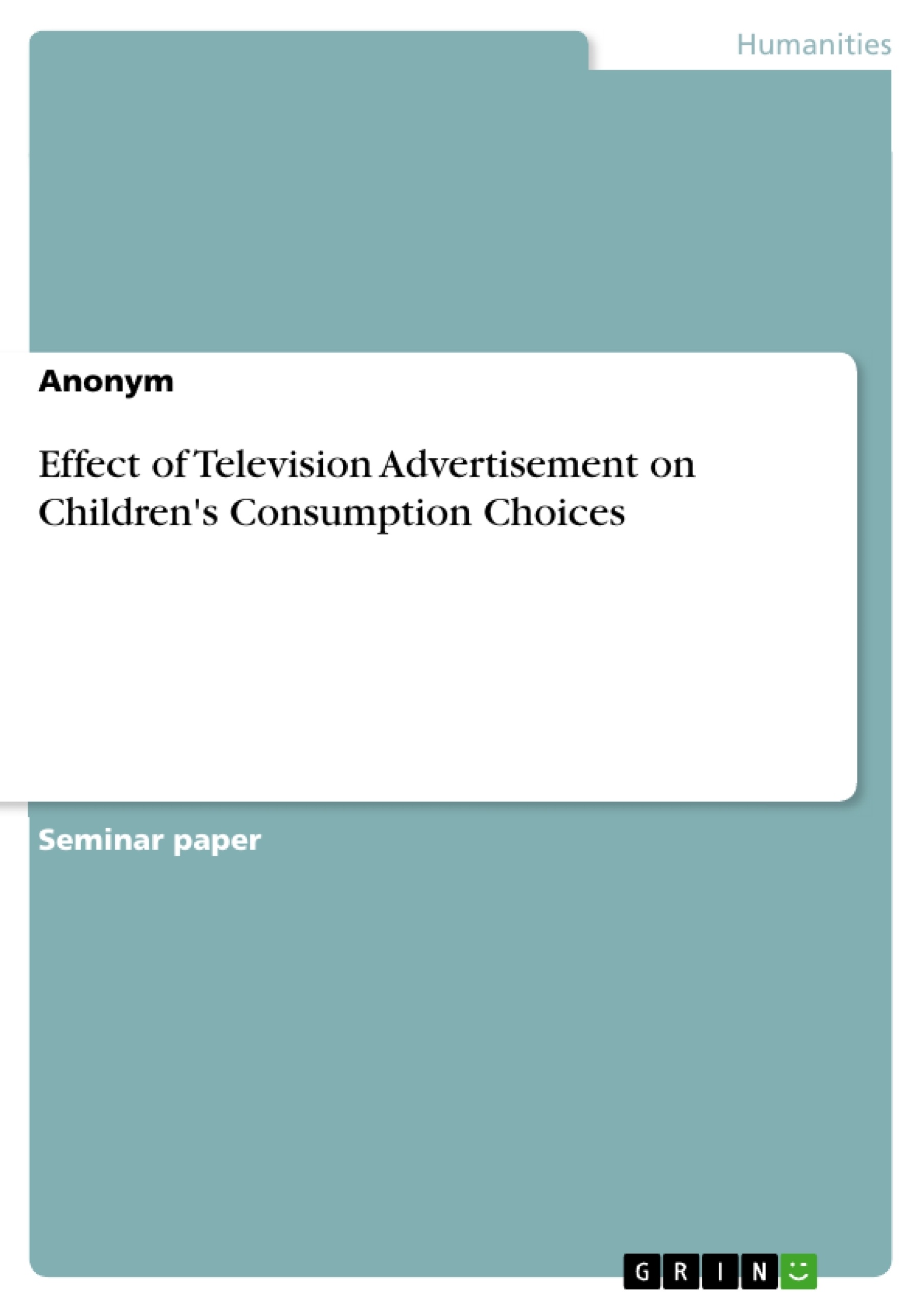The aim of this paper is to examine what effects television advertising may have on the consumption choices of children. Advertising can be defined as a means of communication with the users of a product or service. A television advertisement (also called television commercial, commercial, ad or advert) is a message paid for by those who send them and are intended to inform or influence people who receive them. Many television advertisements feature songs or melodies popularly referred to as “jingles,” or slogans which are designed to be striking, memorable and remain in the minds of viewers long after the advertisement. Humour and animation are also often used or included in advertisements. [...]
Inhaltsverzeichnis (Table of Contents)
- Introduction
- Marketing and Media in children’s media
- Television and Internet Marketing Techniques: Definitions and Use patterns.
- How do children process advertisement?
- The effect of advertisement on children
- The “nag factor”
- The role of marketing and advertising in childhood obesity
- The impact of tobacco advertising on children
- The role of alcohol advertisements on children
- The effects of drug advertisements on children
- The impact of food advertisements on children
- The impact of sexual content in media on children
- The role of school and language in educating children about advertisement
- Media Literacy Training Programs
- Consumer education programs
- Practical exercises and games
- Media literacy programs for students learning German as a second language
- Quote paper
- Anonym (Author), 2016, Effect of Television Advertisement on Children's Consumption Choices, Munich, GRIN Verlag, https://www.hausarbeiten.de/document/418951


